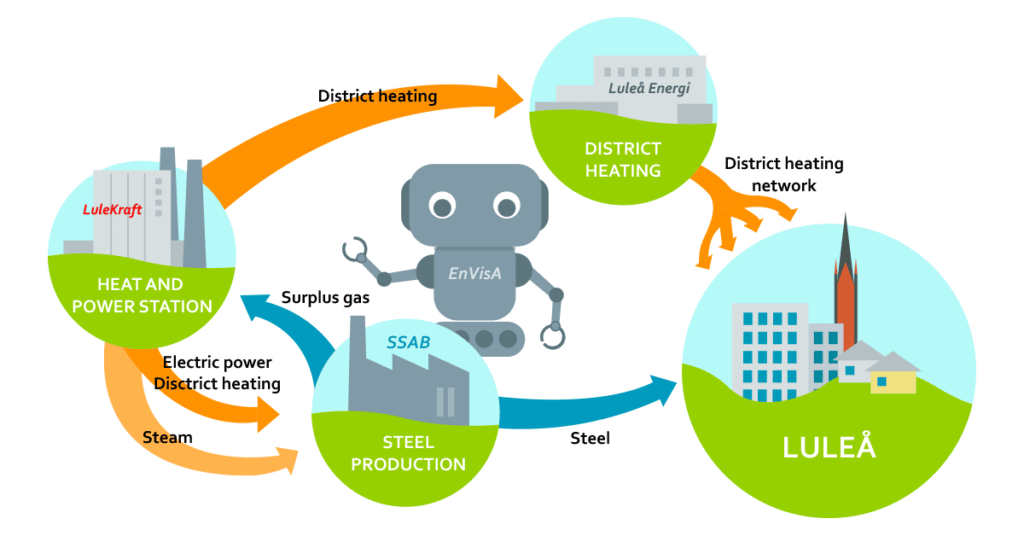We are developing a new visualization solution with AI prediction as part of the EnVisA (Energy Visualization with Artificial Intelligence) project, which is designed to optimize the use of energy-rich gases produced as a by-product of steel production. EnVisA is a collaboration between Sweden’s leading steel producer, SSAB, energy providers Luleå Energi and LuleKraft, as well as the Swerim Research Institute.
Visualization and AI prediction
Energy-rich gas is produced as a by-product by SSAB and transferred to the LuleKraft powerplant to generate electricity and district heating. The production and consumption of gas must be carefully timed and balanced for optimal usage. If production is momentarily too high, excess gas must be burnt in flares. This loss of gas must then be compensated by burning fossil fuel to meet production targets.
The energy visualization solution will provide a user-friendly real-time view of critical data combined from multiple sources. With shared information readily available, operators will be able to collaborate and make better joint decisions.
To further help the decision-making process, several years of historical data will be analyzed and used to train an AI model. The AI model will make predictions based on current and historical data and identify anomalies and suggest optimal decisions.

The need for green AI
The project showcases how Ductus applies AI in practical ways to support partners and clients. Addressing climate change requires impactful solutions, and this work contributes by developing AI/ML prediction technology aimed at reducing the environmental footprint across multiple organizations.
EnVisA is part of a larger project `AI in the service of climate´ sponsored by Vinnova and Formas, Sweden’s Innovation Agency, and Research Council for Sustainable Development, respectively.
More information about this project can be found here:
https://www.vinnova.se/p/envisa—energivisualisering-med-artificiell-intelligens/
